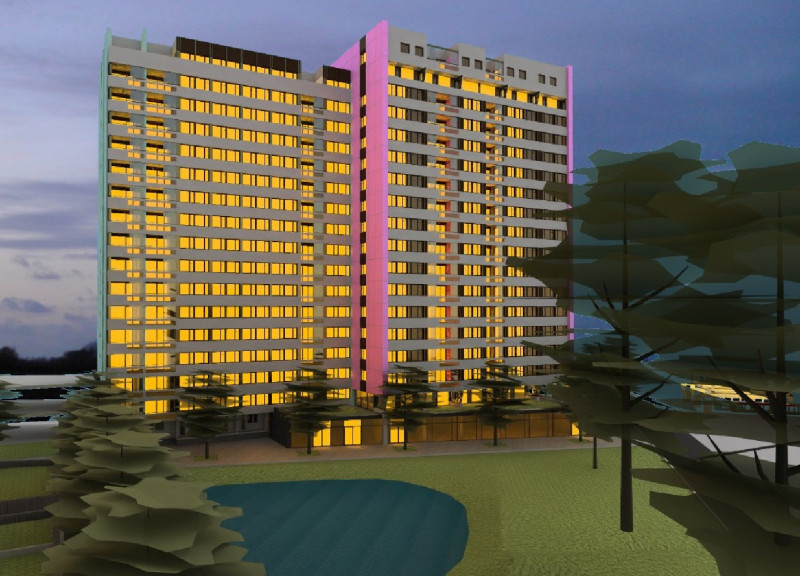5 key facts about this project
At its core, the project is designed to fulfill a specific function, whether that be residential, commercial, educational, or recreational. This focus on purpose is crucial, as it informs many of the architectural decisions made throughout the design process. The layout is organized efficiently to promote flow and accessibility, allowing for effective use of space. Key areas are designed with distinct qualities in mind, encouraging various forms of interaction and engagement. For example, communal spaces are often open and welcoming, featuring large windows that invite natural light and foster connectivity with the outdoor environment.
In terms of materiality, the project employs a diverse palette that may include concrete, glass, timber, and steel, each selected for its structural performance as well as its aesthetic contribution. The use of concrete could provide durability and thermal mass, supporting energy efficiency. Glass elements facilitate transparency, blurring the boundaries between interior and exterior, while allowing occupants to enjoy views of the surroundings. Timber may be used thoughtfully to inject warmth into the design, contrasting the cooler characteristics of concrete and glass with its natural texture and color. Steel might serve structural purposes but could also be utilized as a design feature, offering a modern elegance through exposed beams or supports.
A unique design approach is evident in the integration of sustainable practices. This project may incorporate passive design strategies that harness sunlight for natural lighting while minimizing energy consumption through smart layouts and orientation. Green roofs or living walls could play a role in enhancing the building's ecological footprint, providing not just insulation but also habitat for local wildlife. Furthermore, rainwater harvesting systems or solar panels might be integrated, showcasing a commitment to environmental stewardship.
The architectural design reflects a contemporary sensibility while respecting the historical context of the area, resulting in an outcome that enhances the locality. The proportionality and scale of the structure are carefully considered, ensuring that it dialogues with neighboring buildings without overwhelming them. There may be a rhythm or pattern in the façade that draws on local architectural vernacular, yet employs modern techniques and materials to convey a progressive identity.
Landscaping around the project complements the architectural design, offering a transition between built and natural environments. This may include carefully selected plantings that require minimal maintenance yet provide significant aesthetic value, creating inviting outdoor spaces that promote leisure and recreation. Walkways and seating areas are likely integrated into the design, encouraging patrons to engage not only with the building but also with each other.
In summary, this architectural project stands as a testament to considered design, blending function with significant attention to context, sustainability, and user experience. It reflects an understanding of modern architectural principles while catering to the needs of its environment. To gain deeper insights into the architectural plans, architectural sections, architectural designs, and architectural ideas that have informed this project, readers are encouraged to explore the project presentation in detail.


 Martin Svec
Martin Svec 























